Light ’Em Up—Take Two
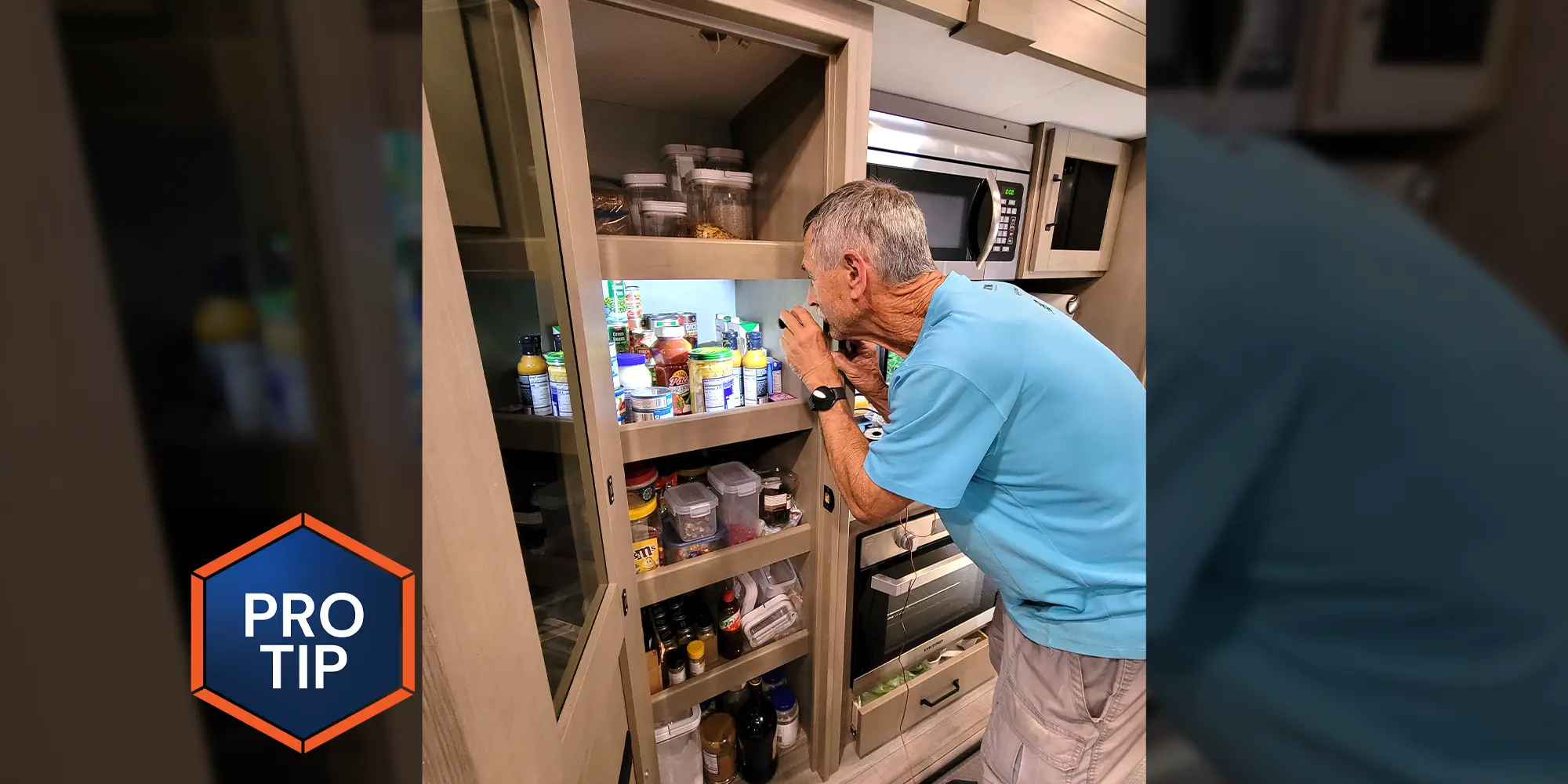
RV owners love a pantry, especially one that has multiple shelves and cavernous dimensions. And most people fill them up. But stacking numerous odd-size packages, plastic boxes and loose items presents a big problem: How to see what’s in there. For months I’ve lived with one lousy LED light above the top shelf, which really does nothing for the other shelves. Rather than hold a flashlight with one hand or in my mouth, I installed a couple of magnetic motion-sensor lights on the door so when opened, I could get some light. It was a good idea in theory, but when the door was wide open the light didn’t penetrate into the back of the pantry very well.
While the motion-sensor lights were better than the single, factory-installed fixture, it was still difficult to find foodstuffs that hid behind taller items — plus, these lights required USB charging periodically. Thinking how well LED strip lights worked under the patio awning, I figured they would be perfect, confirmed after seeing how a boat owner positioned a string of light strips in an onboard cabinet.
Perusing Amazon, I found a 16-foot LED light strip that looked like it would be perfect for my pantry. Search “RV Awning Light, 12V 16.4Ft White RV” and you’ll find a Lrimauix-branded strip for $19.99. It’s backed with 3M adhesive tape that sticks well, and the strip can be cut along marked points (which are every three LEDs). The polycarbonate composition allows for limited bending and the LEDs bathe the area with a highly visible white light.
The next step was figuring out a way to power the light strip without having to flip a switch manually. That’s when I turned to a reed switch that got us in trouble. There are multiple types of reed switches that are normally closed or normally open and I found one on Amazon, “Eplzon Magnetic Reed Switch,” for $9.99 (package of two) in black. Ultimately, this reed switch did not carry the load presented by the light strip (3.2 amps) so it needed to be wired into a Bosch mini relay. This relay, which is available on Amazon for around $7, is one that’s been used in vehicles for decades and is super reliable. Just follow the wiring schematic shown online (also see the image below) and mount it via the tab with the hole on the housing.
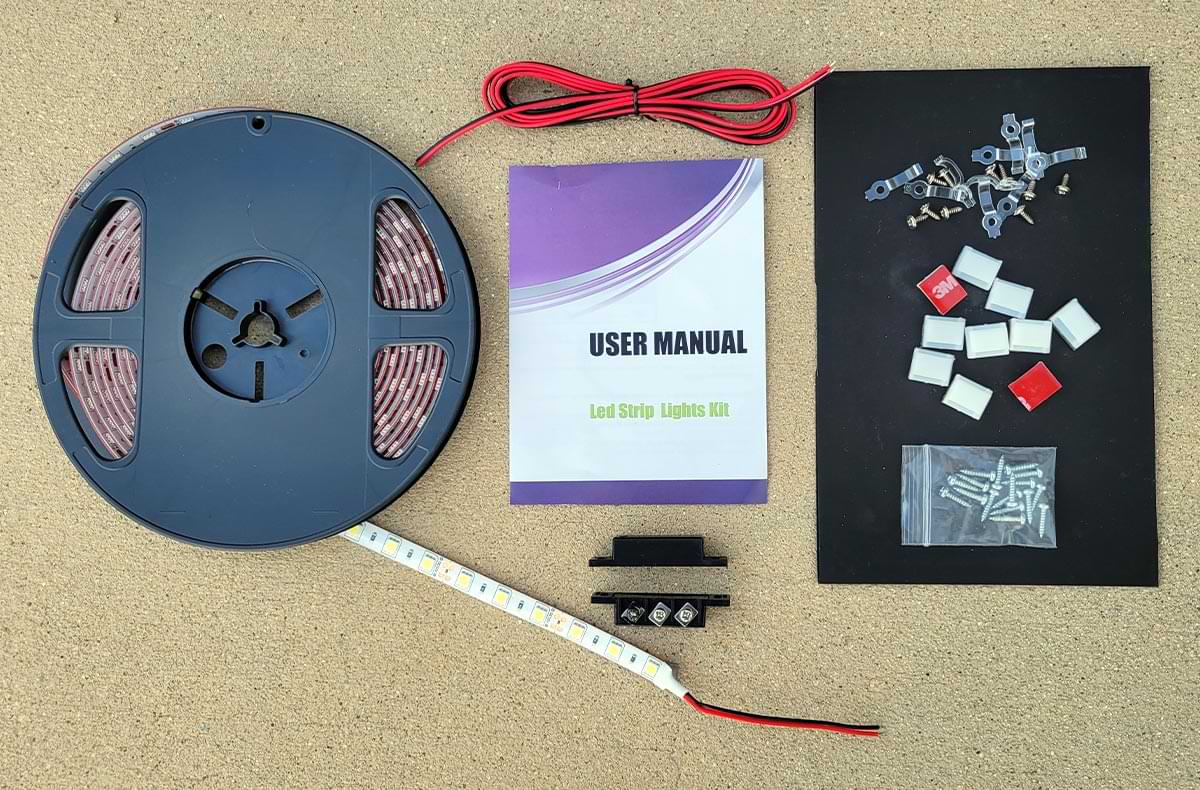
Wiring was straightforward since I was able to tap into the existing light fixture above the top shelf in the pantry. The first thing I did was remove the light and prep for tapping into the positive and negative wires. I was surprised that the factory used 3-way Wago connectors for splicing wires, so all I had to do was flip the lever up to tap into the power — without disconnecting the existing light fixture. The light-gauge wire made it difficult to use butt connectors; solder and shrink tubing can also be used if the Wago connectors are not at your fingertips.
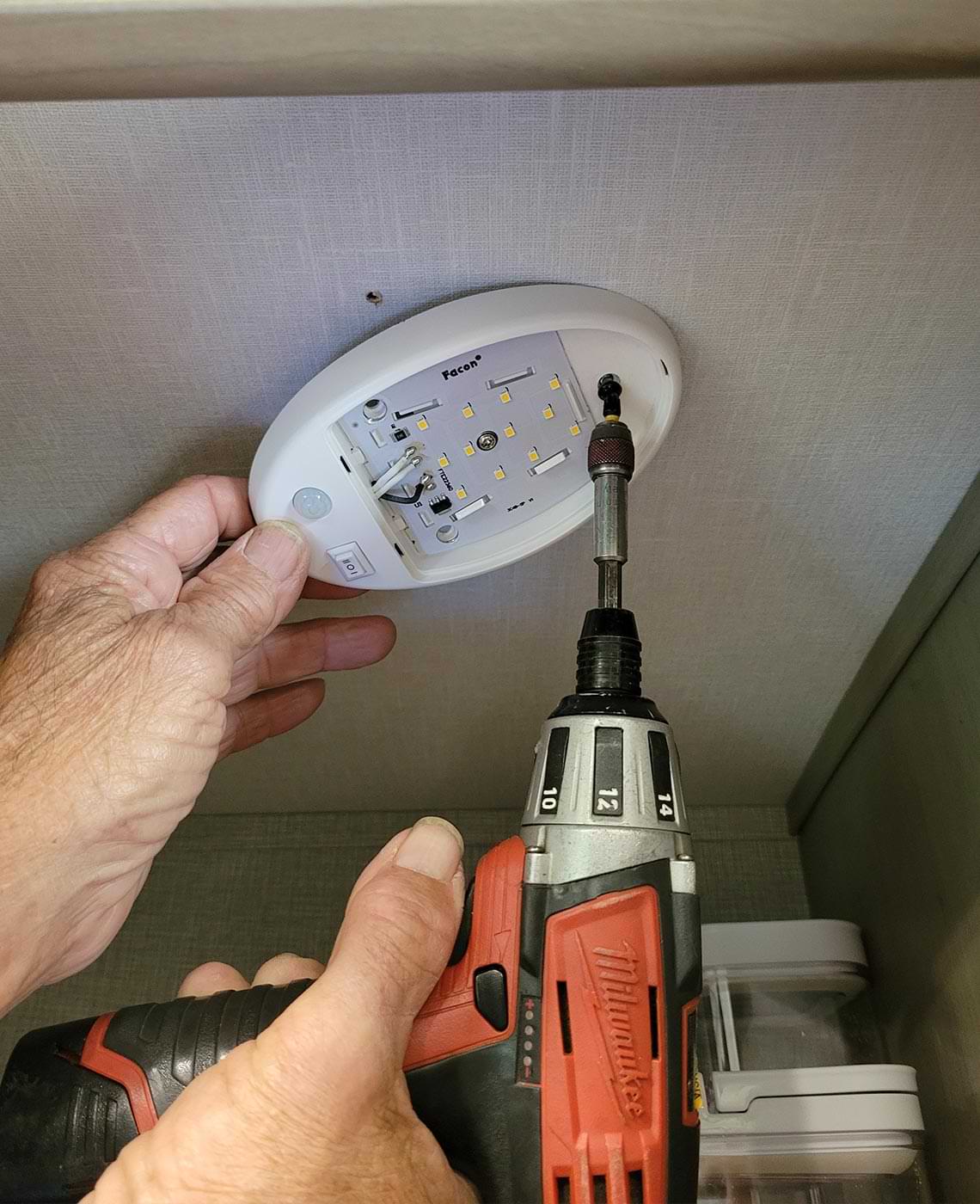
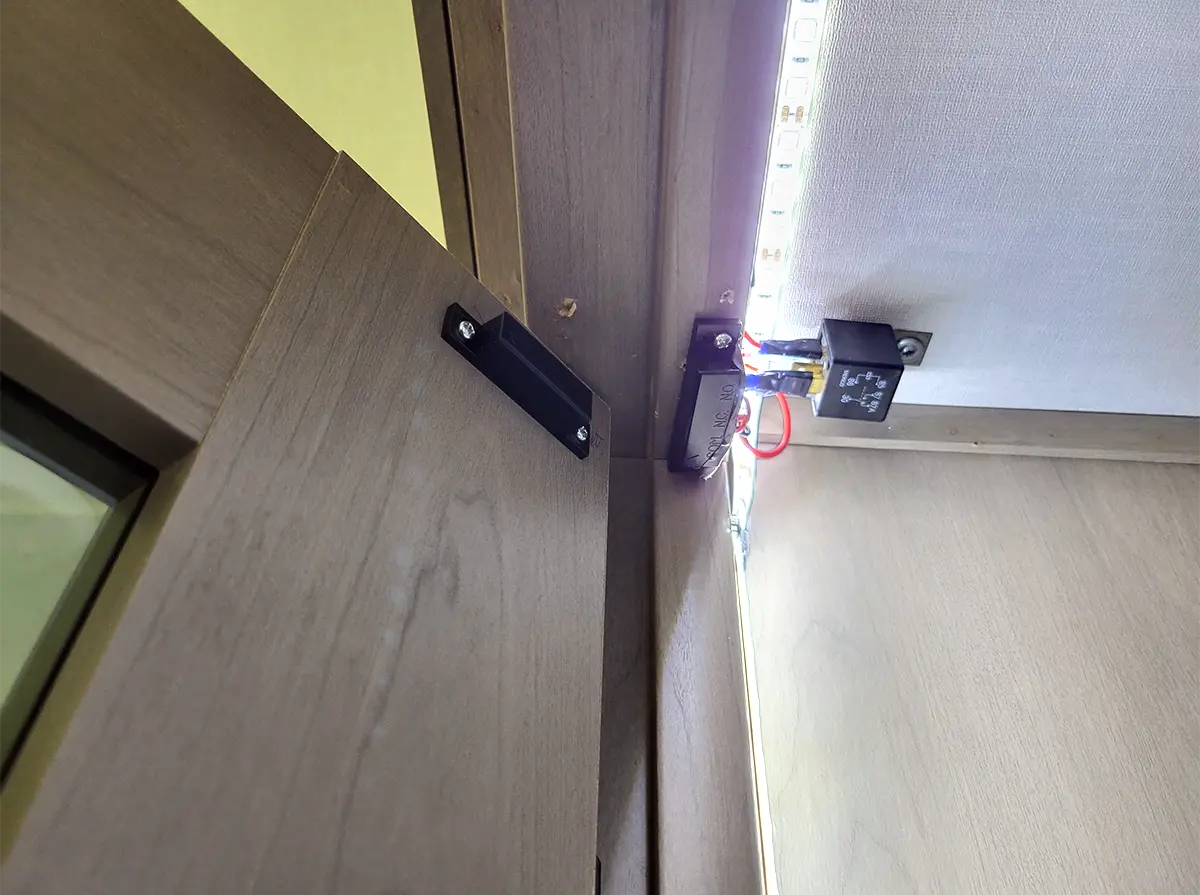
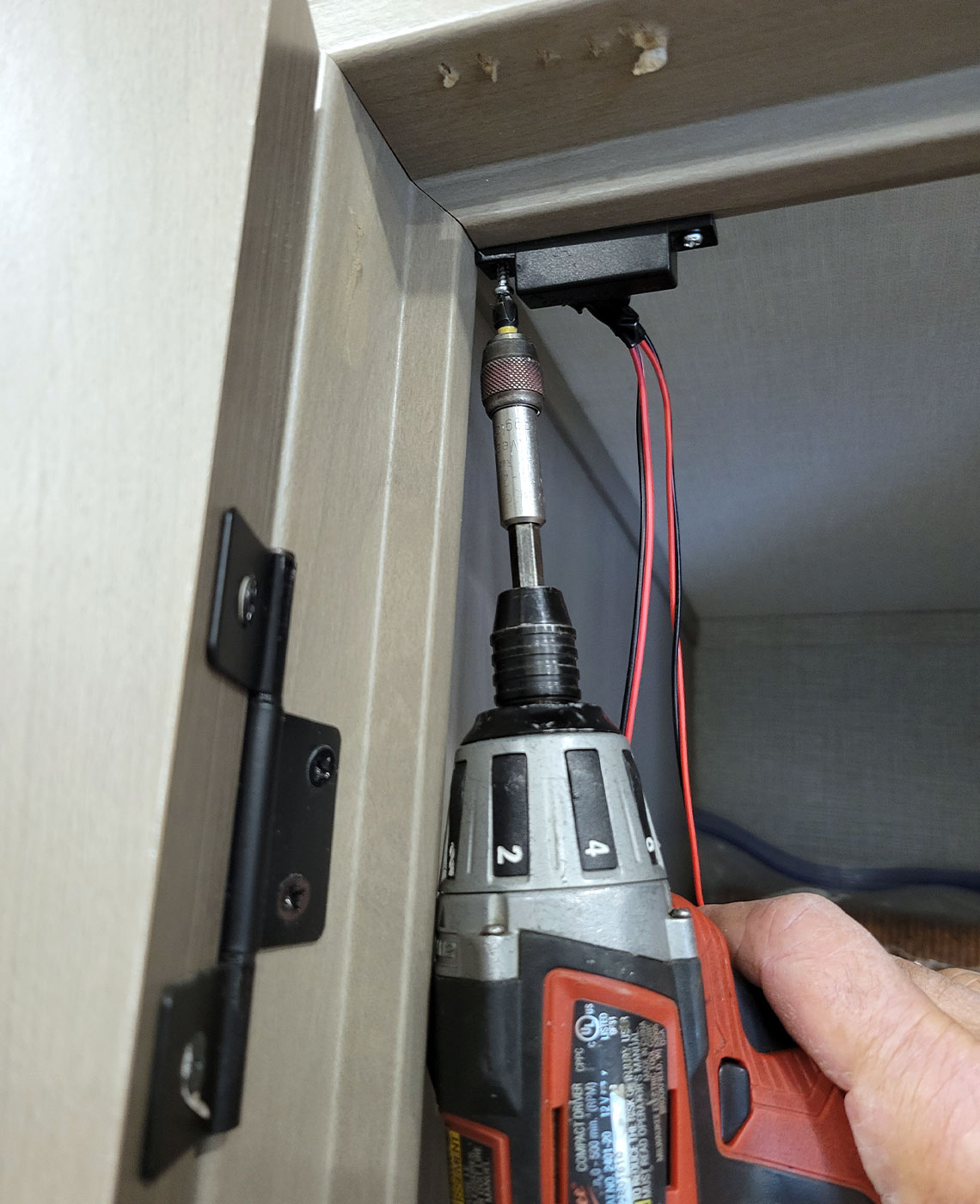
The wired half of the reed switch was mounted to the pantry-door frame after drilling pilot holes. Mounting it high keeps the reed switch out of the way of stored foodstuffs.
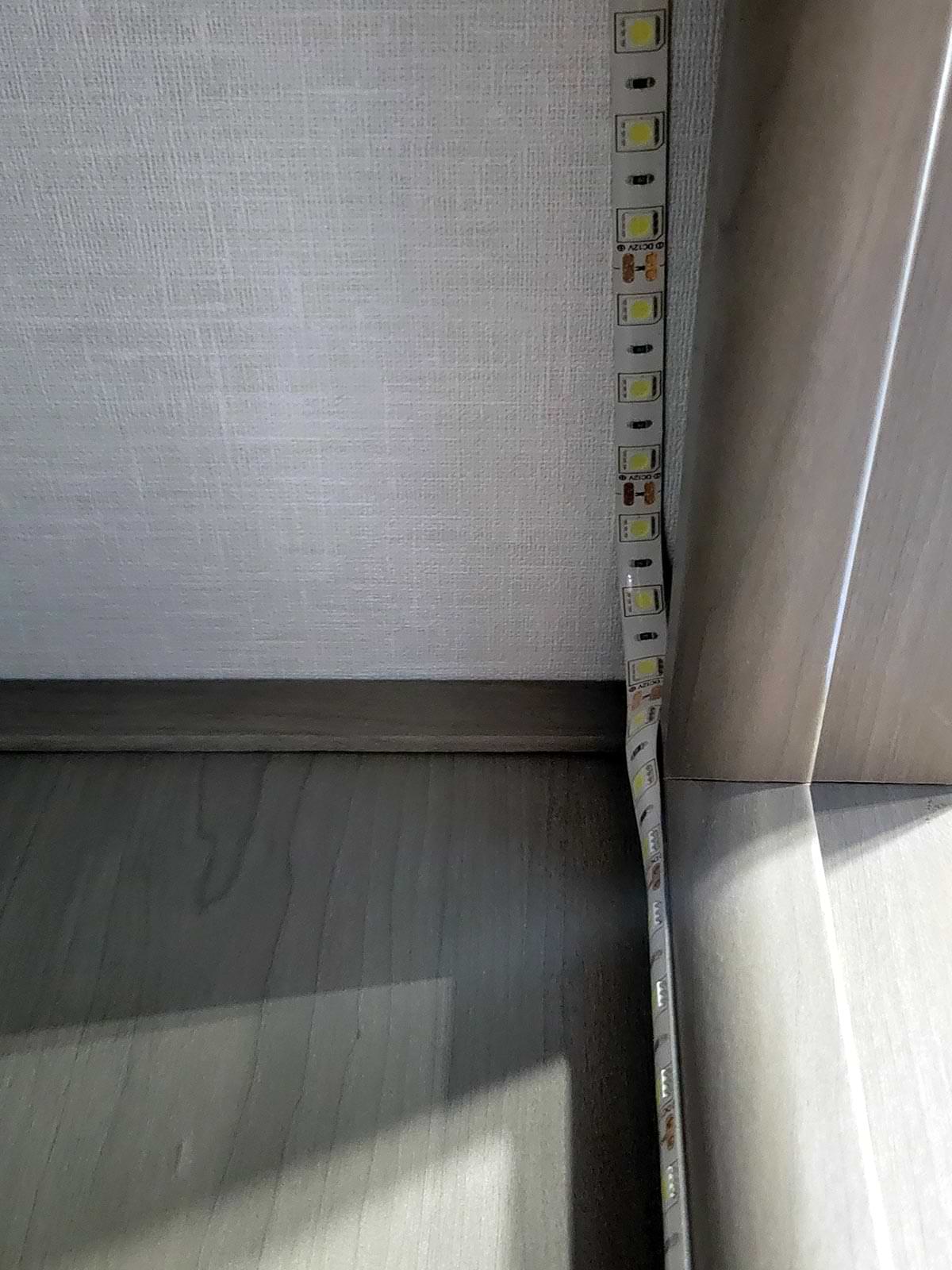
Installing the light strip required cutting it to the proper length to fit the pantry. My intention was to make a “U” shape out of the light strip, starting at the bottom on the left side of the pantry. After cleaning the surface with alcohol, the adhesive tape backing was pulled off one section at a time and the light strip was attached, which took a little twisting to make the bends at the top of the pantry. The 3M tape has a strong adhesion property as long as the surface is clean. I had to cut off roughly two feet. The light strip comes with plastic clamps and small screws to hold it in place in case the double-sided tape does not stick.
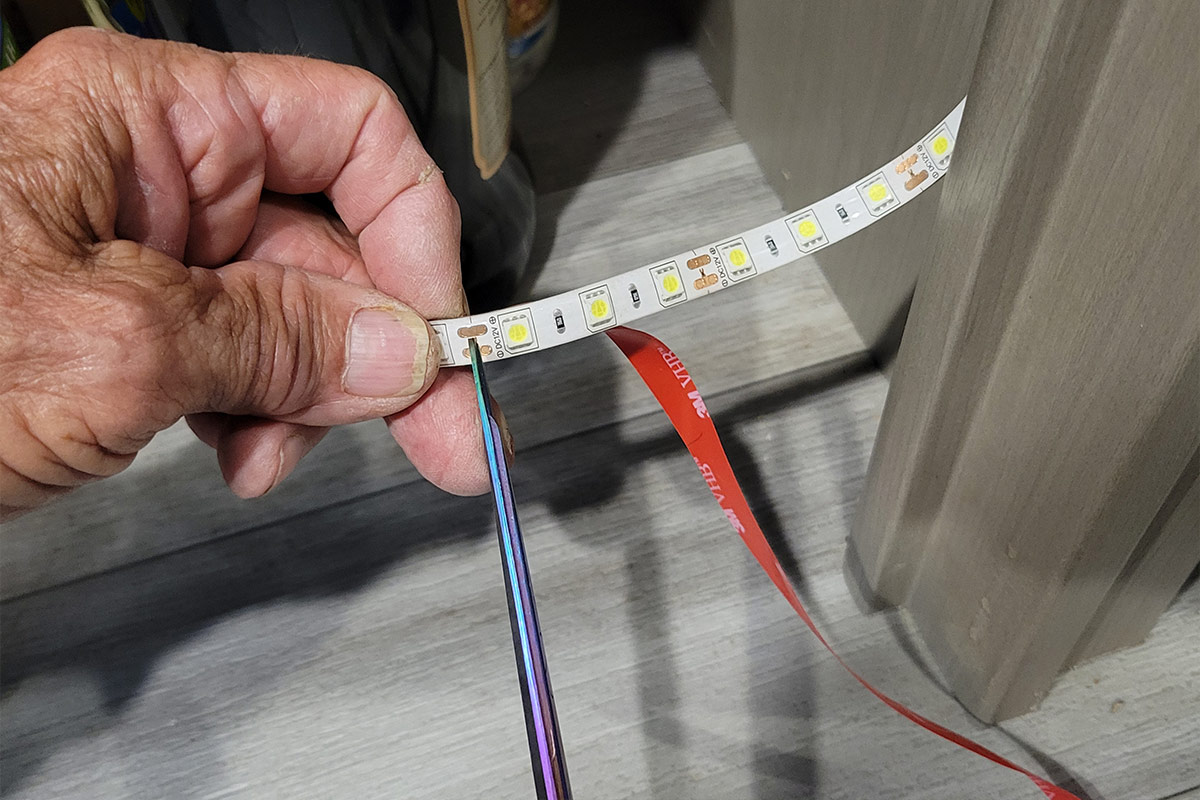
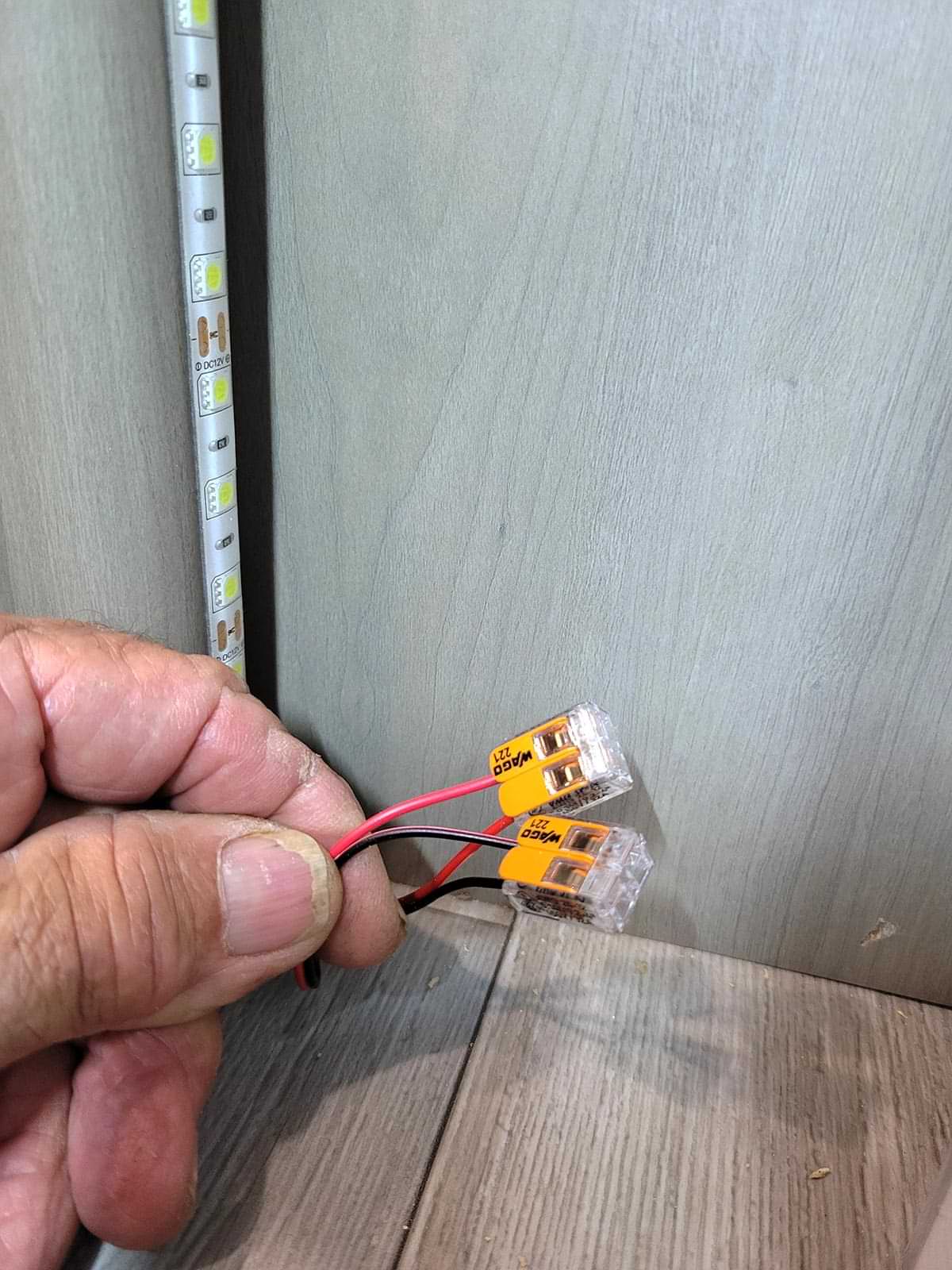
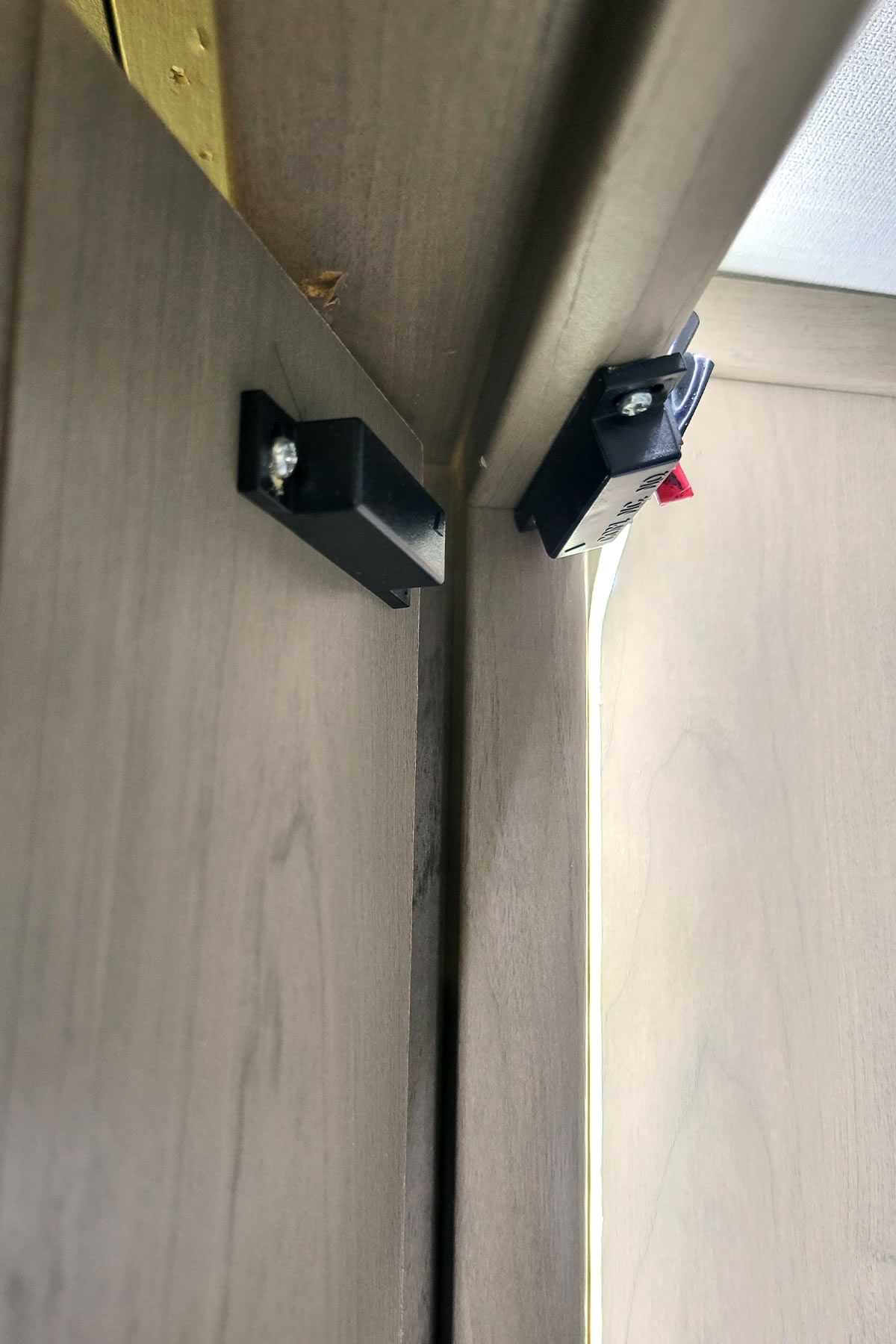
Polarity was checked and, after all the connections were made, the magnet half of the reed switch was installed in the vicinity of the other half — it does not have to be lined up precisely to function properly. I was pleasantly surprised that this type of LEDs are not super bright but still provided plenty of light to actually see what’s stored in the pantry.
Now I can lose the flashlight — for this purpose, anyway — and refrain from buying food I already had in the pantry.
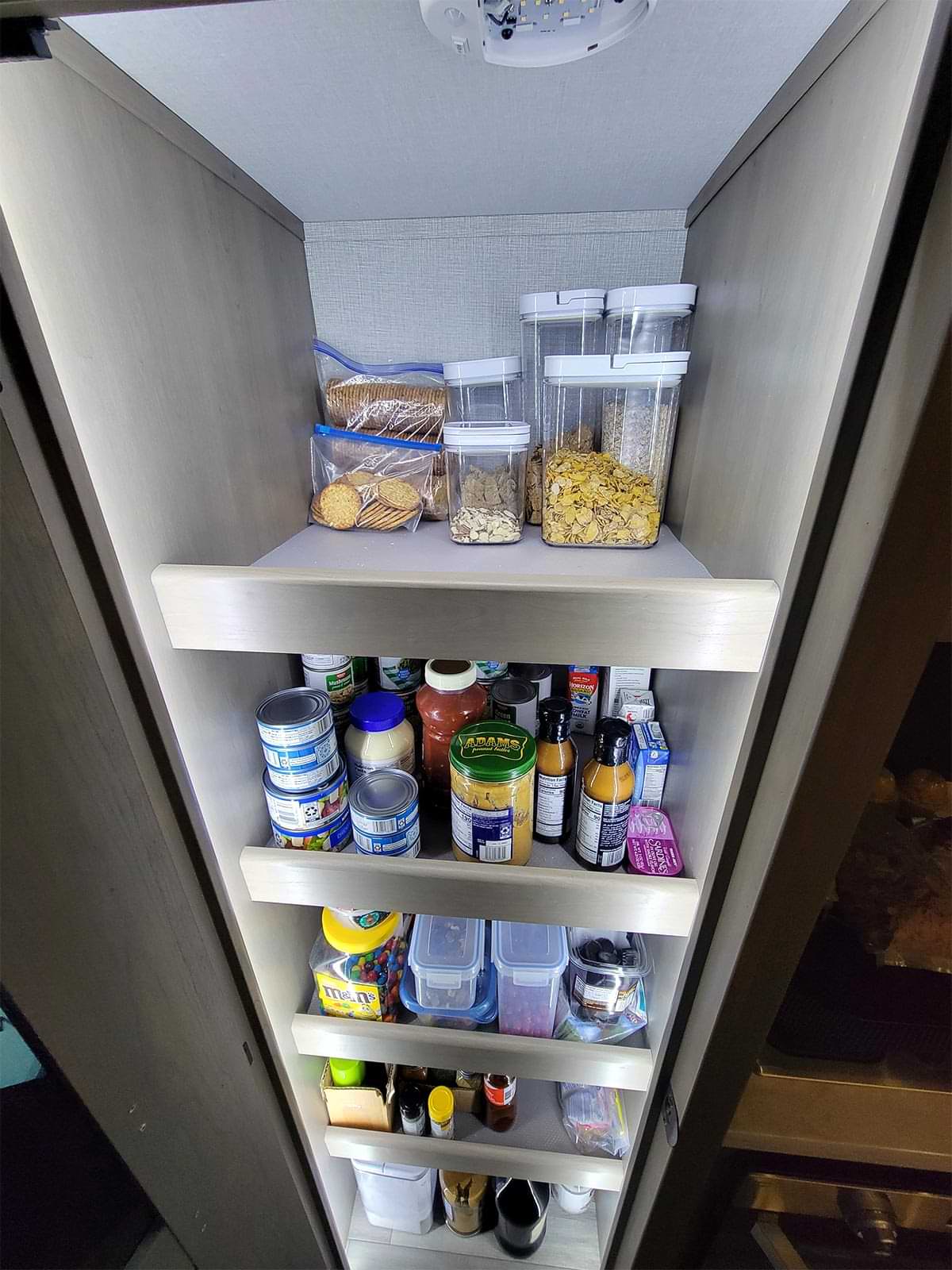
Already a Subscriber? Click here for Access to the Full Issues.

